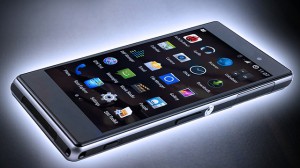 It's no secret that wireless companies have never been a fan of the phone subsidy model for smartphones. While they have continued to operate with this model, largely based on urgings from smartphone manufacturers, they have been working to create plans that allow them to completely shift the cost of the smartphone onto the consumers.
It's no secret that wireless companies have never been a fan of the phone subsidy model for smartphones. While they have continued to operate with this model, largely based on urgings from smartphone manufacturers, they have been working to create plans that allow them to completely shift the cost of the smartphone onto the consumers.
However, times are changing and smartphone manufacturers are slowly easing pressure on wireless carriers, opening the doors for new contract models that shift the burden of the cost of the device onto the consumer. Many consumers are becoming more and more open to this method as they become increasingly tech savvy, with many choosing to purchase new devices each year when they are released. They often do this regardless of what their contract says. With consumers more prepared to actually pay for smartphones, wireless carriers are working quickly to create new plans that not only put an end to smartphone subsidies but also save their customers money each and every month.
A New Trend
T-mobile first began pioneering the trend of no subsidies and no contracts over a year ago and this model has become attractive to other wireless carriers as well. AT&T is now offering several new plans that eliminate the subsidies on phones while still keeping their customers under contract. Sprint has also announced that it may follow suit next year by dropping subsidies, and may even begin looking into leasing options for wireless phones, which is an interesting development. Under the leasing options, users would simply lease the device for use for a predetermined amount of time and at the end of the leasing contract could just swap their device for the latest and greatest model available from manufacturers.
Benefits and Drawbacks for Consumers
Shifting the cost of the devices onto the backs of us consumers is not necessarily a bad thing. Under the subsidy model, wireless carriers pay for a portion of the phone, requiring the customer to pay only a small portion of the cost. The carriers then charge a larger monthly fee to the customer in an effort to recoup some of the hardware costs which they are paying out. When subsidies aren't used, a wireless carrier will charge less per month for the wireless plan while also charging the customer a certain amount per month for the cost of the device. In most of these models, the wireless plans are usually much cheaper when compared to the subsidy model, saving consumers as much as $15 dollars a month on their bills.
While many consumers are reluctant to embrace these new plans offered by mobile carriers, there are definite added advantages to this way of financing phone for both the wireless carriers and the consumers alike. Shifting the cost of the devices to the consumers removes these costs from the wireless carriers, allowing them to offer much more affordable rates for their wireless plans across the board, and while many consumers will end up paying for the devices, these new contracts combined with the equipment prices ends up saving the consumers money each and every month, especially if you are not a person who is forever changing and upgrading their phone.




